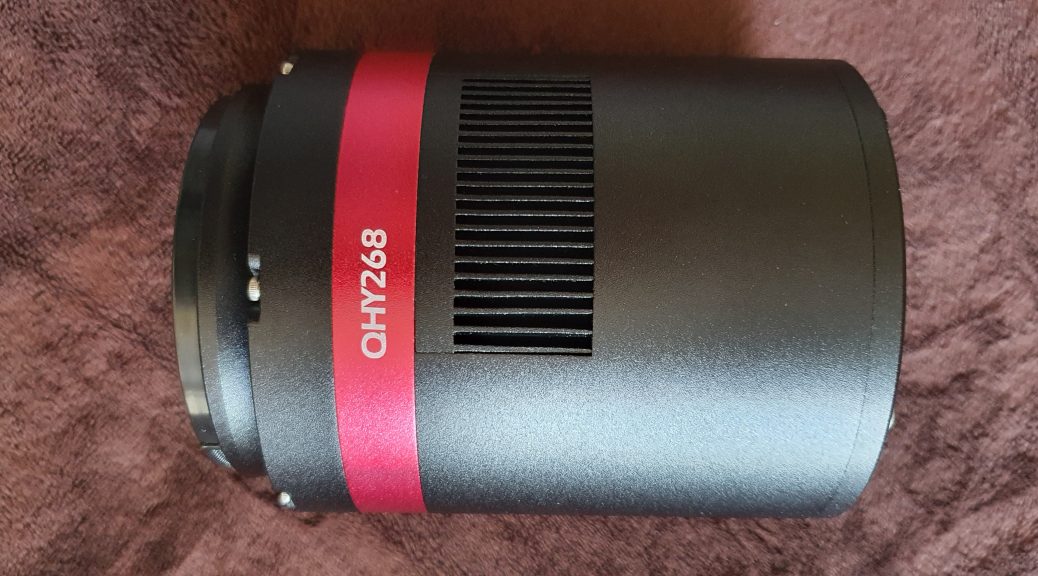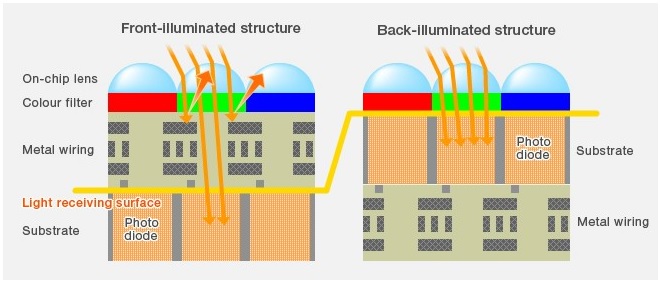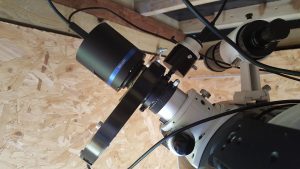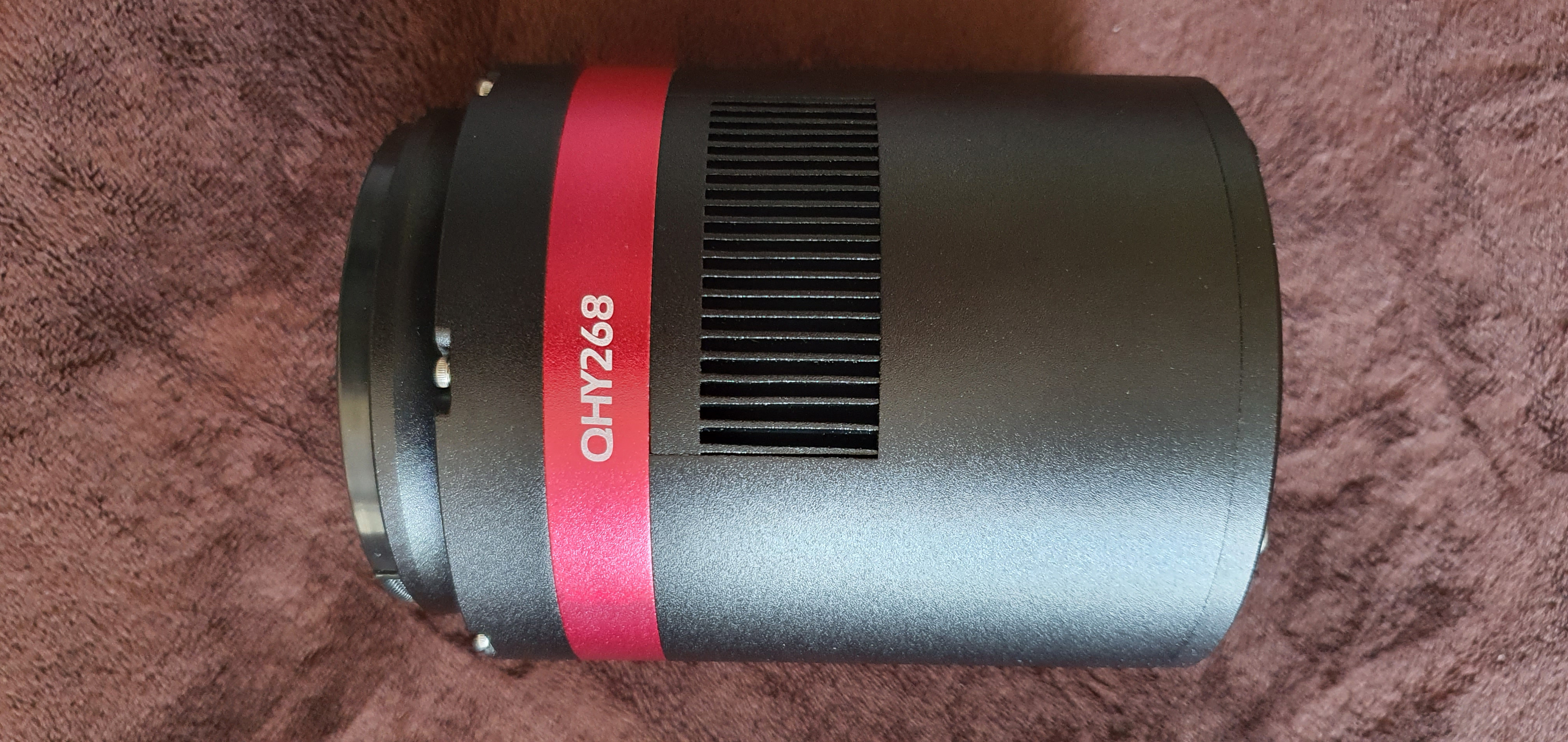
As many of you know, I have been using QHY cameras for a while, but with my plan to move to a RASA telescope next year and wanting to image with a bigger sensor than the QHY183M I decided to go for a bigger sensor but moving away from Mono, the latest addition to the QHY familly is the QHY268C Photographic Version. I had been talking to the QHY team for a long time about this particular camera, and finally I have one.
The QHY268C is a once shot colour camera based on the APS-C Sized back illimunated Sony IMX571 sensor, the camera has a true 16-Bit Analog to Digital Convertor (ADC), now there are a few camera models out there using this sensor, cameras such as the ZWO ASI2600, but one thing that sets the QHY268C apart from the others is the ability to have a 75ke full well capacity which is 25ke higher than the ZWO ASI2600. In my opinion, when imaging at fast focal ratios, a higher full well is desired to protect the colour around bright stars for example.
Opening the box I was greeted with a camera that was bigger and heavier than my 183M, but then the sensor is much bigger than the 183M anyway so this would be expected, but what I did not expect is the additional items that came with the camera:
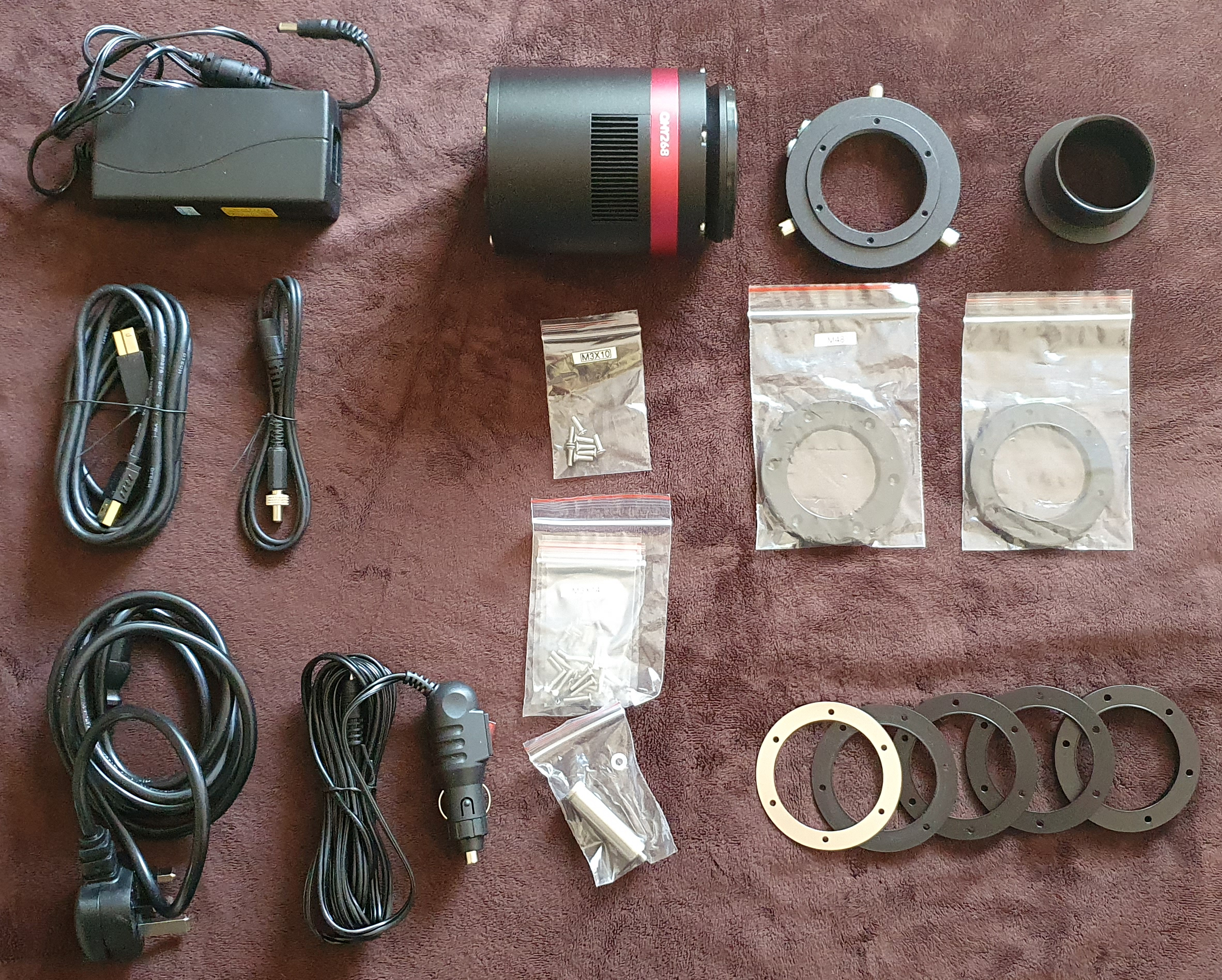
Inside the box was:
- QHY268C Photographic Version
- UK mains plug for 12V AC adapter
- 12V AC adapter
- Car 12v power cable
- Self locking power cable
- 1.5M USB 3.0 cable
- Dessicant drying tube
- Self centering adapter plate
- M54 to M48 adapter plate
- M54 to 2″ nose adapter
- A range of spacers to give you from 0.5mm to 13.5mm spacing
- Associated screws for spacing adapters
QHY cameras have come along way since I bought my QHY183M, one of the things QHY has really worked on is amp glow, my early version of the QHY183M was renowned for was amp glow, which could be removed in image calibrations, but the QHY268C produces no amp glow whatsoever, below is a dark frame of 600S taken at -13.5C and you can clearly see there is no evidence of amp glow.
Attaching to the telescope was pretty straight forward as I had already planned the imaging train before the camera arrived, since I will be using the SharpStar 15028HNT F2.8 Paraboloid Astrograph which has an M48 thread, I decided to keep the whole imaging train at M48 except for the camera of course which has an M54 thread, so I did not actually need to use any of the adapters that came with the camera, the reason for this is because I wanted to include a filter drawer, so my image train consists of the following (from telescope to camera)
- TSOAG9 – TS Off Axis Guider (9mm)
- TSOAG9-M48 – TS M48 Adapter for the OAG (2.5mm)
- TSFSLM48 – TS 2″ Filter Drawer with M48 Thread (18mm)
- M48AbstimmA05 – TS Optics 0.5mm Aluminium spacing ring (0.5mm)
- TSM54a-m48i – TS M48 to M54 Adapter (1.5mm)
- QHY268C with M54 Centering Adapter (23.5mm)
As you can see with all the above I reach my desired back focus of 55mm perfectly, if I was not going to be using a filter drawer (For my Optolong L-Pro and L-eXtreme filters), I would probably have stuck with the spacers that came with the camera. Below is a picture of the camera successfully connected to the telescope.

As far as settings go, after speaking with QHY on this at great length, I will be imaging in Mode 0 (Photographic mode) to avail of the massive 75ke full well, offset I will leave at 30, but Gain I will use two different settings, I will use Gain 0 for most bright objects with the L-Pro filter, but for the L-eXtreme, I’ll probably set a gain level of 26, luckily with SGPro I can set the gain level per object. From a cooling perspective I always image at -20C, one thing I have noticed is that this camera cools to exactly -35C below ambient, I tested this when the ambient temperature was 20.10 degrees, and the camera cooled down to -14.9C, it was always 25C lower until the ambient dropped below 15C and the camera remained at my setting of -20C.
The build quality of the camera is as expected having owned a QHY183M, one thing I did notice is that the fan in the QHY268C is much quieter than the 183M. Technical Details of the camera:
| Camera | QHY268C | QHY183M |
| Image Sensor | Sony IMX571 | Sony IMX183 |
| Sensor Size | APS-C | 1″ |
| Illumination | Back Illuminated | Back Illuminated |
| Pixel Size | 3.76um | 2.4um |
| Effective Image | 26mpx | 20mpx |
| Full well capacity | 51ke (75ke in extended mode) | 15.5ke |
| ADC | 16-Bit | 12-Bit |
| Image Buffer Memory | 1GB/2GB | 128MB |
| Max Cooling Delta | -35C | -40C |
| Weight | 1006g | 650g |
I can’t wait to get imaging with this camera, I have a very aggresive target list for this year in both RGB and Narrowband with the Optolong L-eXtreme filter, I will write part two of the review once I have some actual imaging data. Time to build my dark library.

